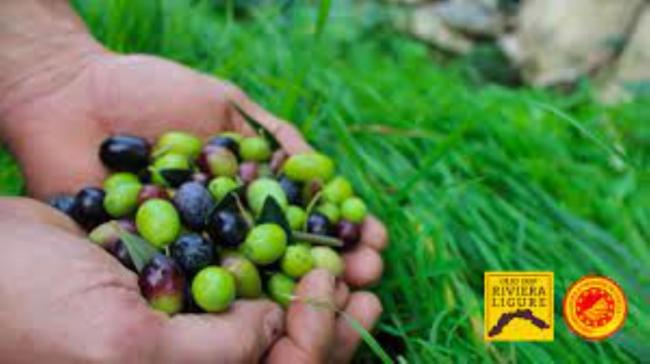Olive tree in Liguria: innovation in low impact strategies, techniques and production methods aimed at increasing the quantity and the quality of production

The goal of OLig + is to increase and to improve olive production, both in the context of integrated agriculture and organic agriculture, in terms of how many - qualitative through:
1a. ADOPTION OF INNOVATIVE CONTROL STRATEGIES AGAINST BACTROCERA OLEAE
- verification of new control strategies that can be implemented in Liguria, also in organic olive growing;
- adoption of forecasting, monitoring and defense methods through mobile applications;
1b. MITIGATION OF LATE ""CASCOLA"", CAUSED BY THE EMERGENCY OF FUNGINE PARASITES, FAVORED BY CLIMATE CHANGE
- identification of instruments for monitoring and forecasting of climatic conditions and definition of control measures, aimed at reducing drupe falls.
2. SETTING UP OF MILLING MACHINERY TECHNIQUES, AIMED AT THE CONSERVATION OF OIL CHARACTERISTICS
- identification of the best techniques that can be used in the oil mill to mitigate the defects of olives (damage from fly, rot, heating).
"The project intends to develop activities dedicated to phytosanitary control and to mitigate the consequences that the attacks of pathogens and pests can cause when processing olives into oil.
Therefore, we intend to act both in the field and in post-harvest conditions.
Field activity:
- verification of new strategies for integrated and organic olive growing strategy;
- adoption of forecasting, monitoring and control methods through mobile applications;
- identification of instruments for monitoring and forecasting of climatic conditions and consequent control interventions, aimed at reducing drupe falls.
Post-harvest activities:
- identification of the best techniques that can be used at the end of the harvest and in the mill for the mitigation of the defects of the incoming olives (damage from fly, rot, heating)."
"Ligurian olive growing has a great tradition, even at an industrial level. The long period of decline, which began after the Second World War, came to a halt in the 1990s when the quality of the product (certified by the DOP) and the best production techniques returned a certain profitability to the crop.
The general problem raised by the growers concerns the need to make olive production sustainable both from a quantitative and a qualitative point of view, particularly in relation to the control of B. oleae and other emerging diseases that cause late fall of olives. Presumably, the latter are closely related to climate change. These phenomena, in fact, are not only present in Liguria, but are common to the entire olive cultivation of northern Italy and many scientific works and field observations seem to confirm the parasitic nature as a consequence of the rise in temperatures and humidity in September and October.
From the point of view of insecticide and fungicide use, the situation is very complex and offers little chance of chemical intervention in the future due to:
- strong restrictions on the use of Dimethoate, the use of which will be definitively banned on 31/12/2019;
- limitations on the use of Imidacloprid and its forthcoming exclusion from agriculture;
- limited performance of other available chemical means;
- need to adopt additional control techniques to support the chemical one (eg punctual and reliable monitoring, ...);
- limitations on the use of cupric products (from 01/01/2019 the Cu is limited to 28 kg/ha to be distributed over a period of 7 years);
- appearance of fungi that hit the stem of the drupes and, favored by high temperatures and humidity, during the autumn season, cause the fall of fruits.
"ADOPTION OF COMPUTERIZED INSTRUMENTS AND INNOVATIVE DEFENSE STRATEGIES AGAINST BACTROCERA OLEAE AND OTHER PHYTOPATHIES, EVEN CAUSED BY CLIMATE MUTATIONS
The phytosanitary defense of the olive, also in Liguria, is going through a decisive phase for its future. In fact, on one hand we are in the presence of:
• reduction of the technical means available (withdrawal from sale of the Dimetoato from 31/12/2019 and from 30/06/2020 interruption of the use of company stocks)
• difficulty in supporting large-scale monitoring networks from a technical-economic point of view
• diversification of the productive base between professional farmers and more or less professionalized part-time figures
At the same time, we are witnessing: a growing lack of provision of specialized technical assistance; increase in phytosanitary problems, also following new ""alien"" pests; increase in the abandonment of olive groves and lack of soil tillage.
Therefore, a difficult transition period opens, not covered by chemical and biological means, whose effectiveness is more than partial and strongly linked to efficient monitoring and forecasting tools, not yet fully applied.
These problems are also compounded by the effects of climatic changes which, by ensuring high temperatures and humidity still in the months of September and October, favor both the increase of fly generations and the attack of secondary phytopathologies on the drupe.
The purpose of innovation, therefore, is:
A. the introduction of strategies and innovative techniques for monitoring and fighting against the olive fly;
B. mitigation of the consequences of climate change on fly attacks and secondary damage caused to drupes by other fungi and insects.
Materials and methods for achieving the goals:
1. apply a phytosanitary model maker based on phytophage biology and climate data, integrated with innovative ""participatory"" monitoring techniques, through the use of a mobile phone application (App) that is easy to interact and consult (SSSA);
2. to set up a participatory monitoring approach against B. oleae, in order to increase the amount of data coming from the territory and improve accuracy and to favor the assessment of insect infestation risk throughout the year (SSSA) ;
3. mitigate the effect of climate changes that are causing phenomena of autumnal drupe ripening (CeRSAA);
4. apply and test the products (chemical, biological, biotechnological), the strategies and techniques of monitoragigo and defense foreseen in points (1), (2) and (3) in reference olive groves, stimulate the start of processes of extension of the label, of mutual recognition or registration of means of defense, through essays accredited by the Centro di Saggio (CeRSAA);
5. transfer the technological and scientific innovations to the current monitoring network, with the aim of improving information services (SSSA, also with the external collaboration of the CAAR-Liguria Region);
6. verify the interference of the solutions adopted on the quality of the oil (control of recognized tasting panels; control forwarding using NIR tools).
Expected results:
- overall review of defense strategies against B. oleae and against physio and emerging plant diseases;
- understanding of the interference of climate change on the phytosanitary framework of the olive tree;
- introduction of the necessary updates in the regional integrated control regulations"
"SET UP OF OIL MILL TECHNIQUES, AIMED AT THE CONSERVATION OF OIL CHARACTERISTICS
Associated with innovation (1) is also introduced and verified the identification and introduction of the best techniques that can be used in the oil mill aimed at mitigating the defects of the incoming olives, caused by B. oleae, by the nutrition bites of the Asian cimice, by the ripening rotting recently manifested due to climate change and the rarefaction of plant canopy management (reduction of pruning frequency, as shown by a recent survey carried out by CeRSAA). The combination of these factors worsens the quality of the olives entering the mill and favors the extension of heating phenomena in the post-harvest and pre-crushing phases.
This innovation includes:
- monitoring of farmers activities (olive farm) during the post-harvest phase. The recording of the activities, the evaluation of the average quality of the harvested product (measurement of the alterations from B. oleae, fungi, mechanical damages, ...), the recording of the temperatures recorded during this phase, will produce a document of good practices dedicated to the olive grower (eg cancellation of olive defoliation, in order to maintain ventilation of the mass of olives, ...);
- mounting of the temperatures of the olives during the whole picking-cleaning-transporting phase to the pre-crushing crusher;
- evaluation of the quality of the oil (through chemical and organoleptic analysis) in relation to the different qualitative and thermal scenarios of the olives rendered to the mill (microfrangiture), comparing different scenarios for: humidity of the olive heap; oxygenation; match temperature; duration of the period between harvesting and pressing; ..."
Documentazione del workshop Innovazione e conoscenza per l’agricoltura: le sfide del futuro per la cooperazione in Liguria
I Gruppi Operativi, Liguria, PEI-AGRI, Italia| Titolo/Descrizione | Url | Tipologia |
|---|---|---|
|
Sito web del progetto
|
Sito web
|
|
|
Sito istituzionale del capofila
|
Link ad altri siti che ospitano informazioni del progetto
|
|
|
Sito istituzionale del partner Consorzio Olio DOP Riviera Ligure
|
Link ad altri siti che ospitano informazioni del progetto
|
|
|
Sito istituzionale del partner
|
Link ad altri siti che ospitano informazioni del progetto
|
